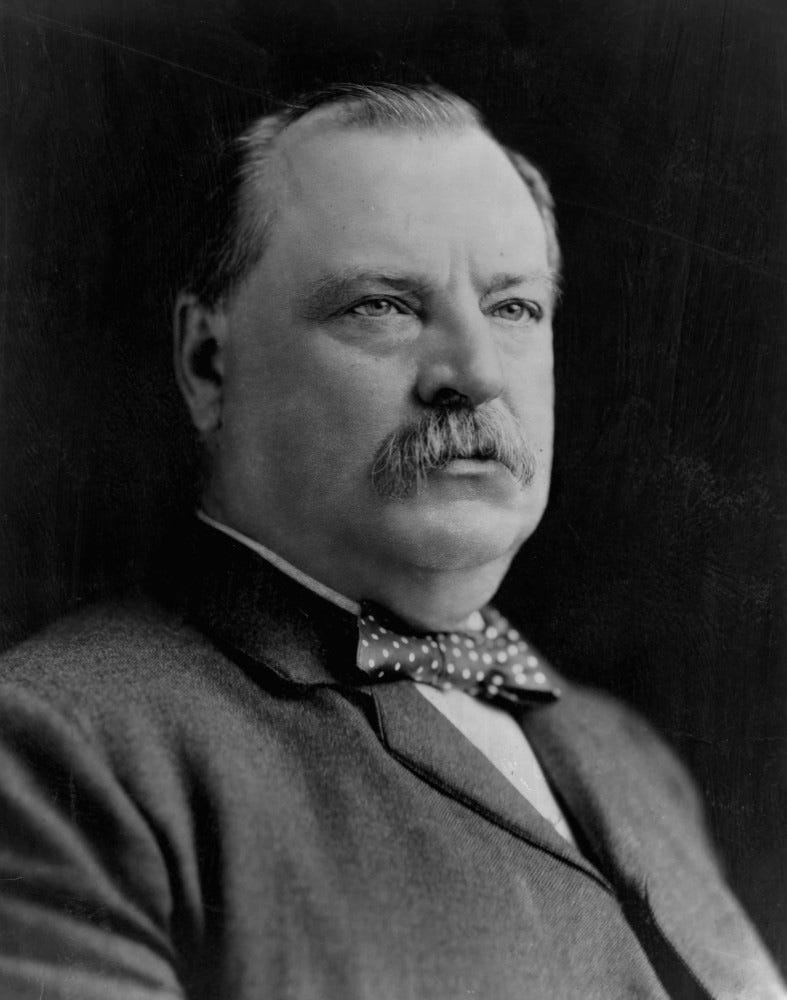Thursday Things is here! This week we print with Picasso, grieve with Grover, and meet some selectively social macaques.
If you enjoy this edition, please click the heart icon in the header or at the end of the post to let me know.
Barn in the USA! I’m a barn in the USA! Photo by specphotops on Unsplash
Printing Picasso
You know you’re good when even your lesser known works get their own exhibition.
See Picasso’s Lesser-Known Print Works, Which He Continued Experimenting With Into His 80s
Pablo Picasso is most famous for his role in the Cubist movement, creating abstract paintings that showed a subject from multiple perspectives. Now, a new exhibition at the British Museum is revealing a lesser-known part of his career: his skill as a printmaker.
The Spanish artist produced nearly 2,500 prints—about 100 of which will be on display at the show in London. Although Picasso had little formal training, his curiosity drove him to explore etchings, lithographs, aquatints and linocuts.
“Many people will be familiar with Picasso’s paintings,” says Nicholas Cullinan, the director of the British Museum, in a statement. “But this exhibition aims to build an appreciation of him as a master of printmaking and highlight how his lifelong experimentation with the medium inspired his creativity.”
The exhibit starts with Picasso’s first professional print in 1904 and includes prints he made well into his 80s.
The British Museum has been actively acquiring Picasso prints in recent years.
And if there is one thing the British Museum is good at, it’s acquiring works from other countries. They now have the largest collection of Picasso prints in the UK.
In addition to his many paintings, sculptures and drawings, the Málaga-born artist made over 2,400 prints during his career. From his early years as an artist in Paris to his old age in the South of France, printmaking offered Picasso the opportunity to develop ideas, tell stories and embark on new creative adventures.
The exhibition is on view at the British Museum in London from November 7, 2024, to March 30, 2025.
Get more details and view a slideshow of the highlights at the British Museum website.
“Just one of my lesser works.” Leaping Bulls, Pablo Picasso, 1950 @ Succession Picasso / DACS, London 2024 via Smithsonian Magazine
Grieving Grover
We don’t do politics at Thursday Things, but we do engage with history. So let’s take a moment to appreciate President Grover Cleveland.
What did he accomplish in office? Who knows? History nerds maybe.
No, the only reason anyone remembers Grover Cleveland today is because he was the only president to be elected to non-consecutive presidential terms.
Key word: was.
Cleveland was both the 22nd president serving from 1885 to 1889 and the 24th president from 1893 to 1897. That’s his claim to fame.
Without that he might as well be Chester A. Arthur. Or Franklin Pierce.
And now, as of this week, the one thing that made Grover Cleveland, well, Grover Cleveland is gone.
So you kind of owe it old Grover to pay a visit to the Grover Cleveland Online Presidential Library. Or perhaps the Grover Cleveland page of the White House Historical Association:
One of nine children of Presbyterian minister Richard Falley Cleveland and Ann Neal, Cleveland was born on March 18, 1837 in Caldwell, New Jersey. He was raised in upstate New York. As a lawyer in Buffalo, he became notable for his intense concentration upon whatever task faced him. At 44, he emerged into a political prominence that carried him to the White House in three years. Running as a reformer, he was elected mayor of Buffalo in 1881, and later, governor of New York.
Cleveland won the presidency with the support of Democrats and reform-minded Republicans, the “Mugwumps,” who disliked his opponent James G. Blaine of Maine.
Blaine? Pfah! I hear he was a continental liar from the state of Maine. That’s what I heard, just saying.
The 1884 presidential contest was a no-holds-barred fight.
Well, at least we don’t do that anymore.
The Democratic Party portrayed Blaine as an immoral and corrupt politician while stressing Cleveland's appeal as an honest civil servant. At the same time, Republicans accused him of avoiding military service during the Civil War, and called him "the hangman of Buffalo" for personally hanging two criminals while serving as sheriff.
So Cleveland was tough on crime … and his opponents thought pointing that out would help them? I can see why he won.
The most serious allegation against Cleveland revolved around his relationship with Maria Halpin. She accused Cleveland of assaulting and impregnating her in 1874. He never denied paternity and arranged for Maria to be institutionalized against her will so that he could take custody of the child, whom he named Oscar Folsom Cleveland. During the 1884 election, Democratic Party strategists insisted that Maria had slept with several men, including Cleveland’s deceased law partner, Oscar Folsom, and that Cleveland only claimed the child to protect Folsom’s marriage.
Er … wow … that’s a lot.
So he named his alleged illegitimate child after his dead law partner? Okay, Grover’s got a few skeletons in the closet, sure. Wouldn’t be the first politician we could say that about, right?
Nonetheless, the revelation did not sink Cleveland’s chances and he narrowly defeated Blaine. The campaign also inspired the famous ditty: "Ma! Ma! Where's my pa! Gone to the White House, Ha! Ha! Ha!"
That would be all over TikTok if it had been around back then.
Cleveland did not care for the extravagance of the Washington social scene; he asked his sister, Rose, to accompany him to the White House to serve as its hostess early on in his administration.
That’s nice. Rose probably needed a job.
He also began courting Frances Folsom, the young daughter of Oscar Folsom, and the two married on June 2, 1886 in the Blue Room of the White House. The couple had five children together.
Wait a minute — Grover married the young daughter of his dead law partner who he named his allegedly illegitimate son after?
So. Much. Drama.
Anyway, if you’re curious to know more about the man who used to be the only president elected to two non-consecutive terms and his apparently soap opera life, check out the linked article above or try:
Grover Cleveland papers collection at the Library of Congress
Or one of the book about Big Grover C listed in this article: The Best Biographies of Grover Cleveland
And while you’re at it, spare a thought for the authors and editors of all the presidential trivia books that have to be revised now.
“I’m here, I’m gone, I’m back again — that was my thing, man!” Image: LOC
Friends for life
Are your friends trying to kill you?
Probably not.
But that doesn’t mean they won’t. And perhaps if we want to survive longer, we can learn a thing or two from the rhesus monkeys and thin out our friend group before they do us in.
Why having fewer friends could actually be better for your health
Keeping a small circle of friends helps you avoid drama, and if you’re a monkey, it keeps you from getting ill. Researchers have noticed that aging rhesus macaques are less likely to contract diseases when they are less social.
“Our findings suggest a powerful reason why many animals, including humans, might reduce their social connections as they age,” says study co-author Erin Siracusa, a researcher from the University of Exeter’s Centre for Research in Animal Behavior, in a media release.
According to the team from the universities of Exeter and Edinburgh, the study is one of the first to examine how the potential risk of disease influences social aging from an evolutionary perspective. Like humans, many animals experience social aging, a behavior in which social connections decrease as one ages.
Just going to stop here and note that, while this may be accurate, it is also possible that people have fewer social connections as they age because their friends keep dying.
In a special issue of Philosophical Transactions of the Royal Society B, the study authors used our closest human relatives to solve this social mystery. While social ties are important to the species’ survival, older adults may reduce their social connections to avoid getting sick.
Older adults have weaker immune systems and would be more prone to catching infectious diseases from others. However, the new data showed older macaques had lower infectious disease rates than younger macaques in their group.
Older macaques also may have less patience for the younger macaques’ foolish nonsense, what with their TikToks and selfies and their stupid slang and poor work ethic. Why, back in the day, we foraged for our own food out in the forest. We weren’t lazing around taking handouts from tourists and posing for pictures! And another thing …
Wandered off track there.
Anyway, it’s an interesting study and you can read all about it in a very special issue of Philosophical Transactions of the Royal Society B: ‘Social ageing can protect against infectious disease in a group-living primate.’
Get away from my wall, you germ-carrying hooligans! Photo by Vishal Yadav on Unsplash
Thank you for reading!
Please click the hearts, leave a comment, and use the share feature to send this issue to a friend who might enjoy it. See you next Thursday!






